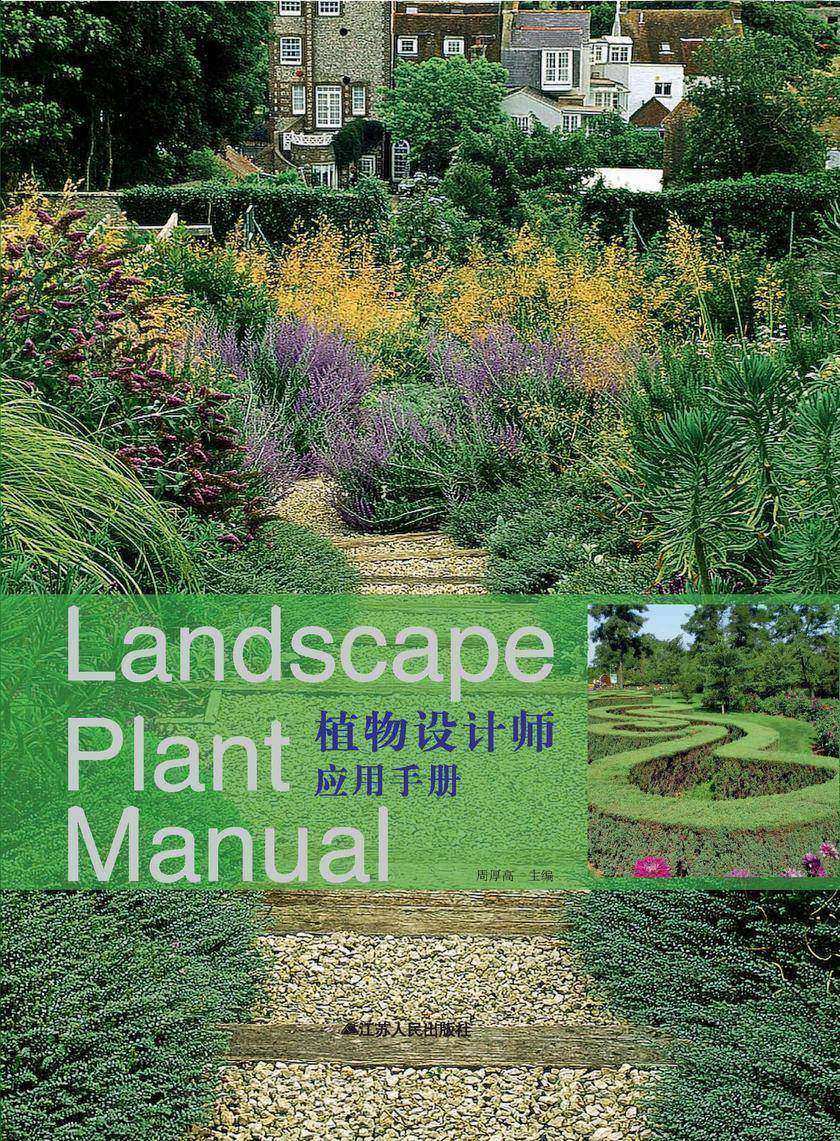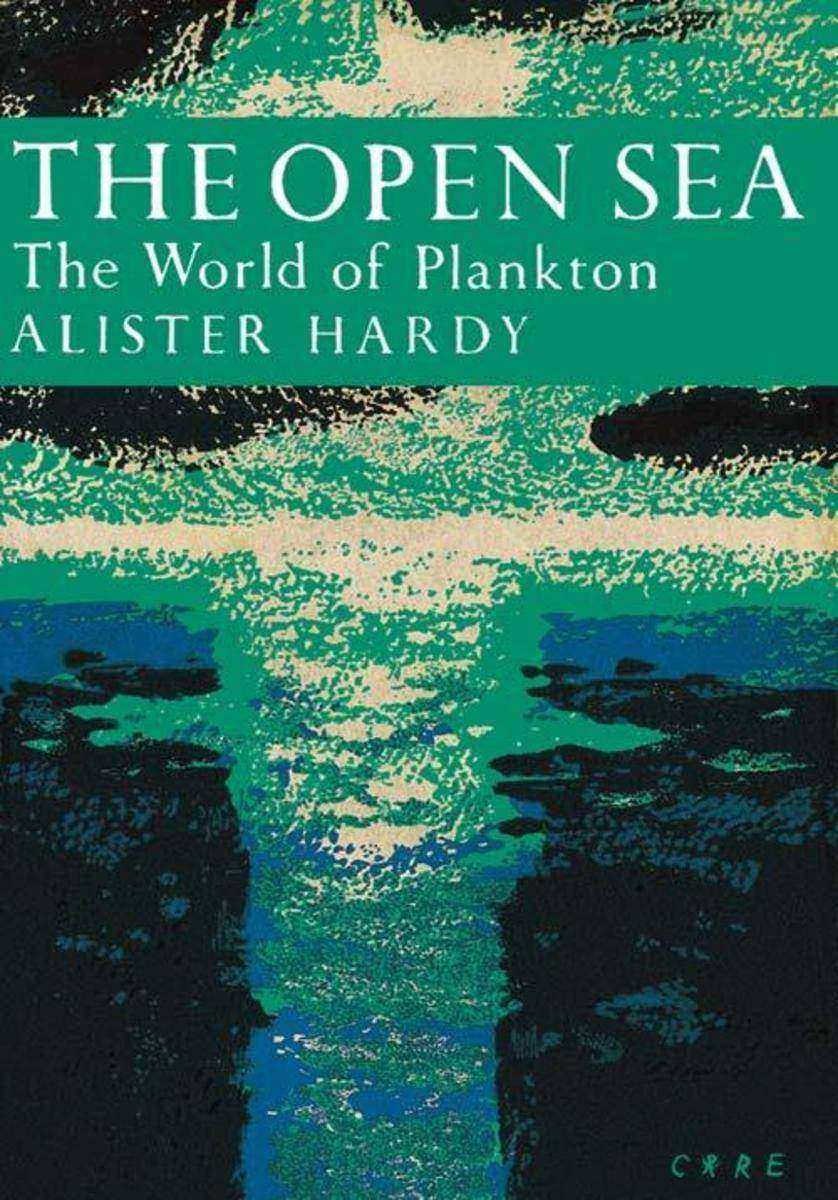

周汝昌师友书札手迹(精) 中华书局出品
¥476.00
周汝昌先生(1918—2012)早岁两度就读于燕京大学,后执教于成都华西大学、四川大学。一九五四年返回北京,历任人民文学出版社编辑、中国艺术研究院研究员等职。自二十世纪四十年代至新世纪之初,周先生不仅撰写了包括《红楼梦新证》、《诗词赏会》等在内的大量学术论著与随笔、诗词,参与文学古籍的整理和编辑工作,还妥善保存了一批珍贵的文献资料,这就是数量极为丰富的师友翰札与书画墨迹。这批文献资料藴含着丰富的文化与学术信息,具有重要的历史价值和文物价值。有鉴于此,中华书局编辑部特约请周伦玲女士编选本书,将周先生师友翰札及诗笺、画作较有代表性者按原貌影印刊布,并附参考释文,俾可嘉惠学林,以为相关研究的参考。 本书收录张元济、汪鸾翔、夏仁虎、陶洙、胡适、吴宓、顾随、张伯驹、夏承焘、俞平伯、谢国桢、闻宥、商承祚、聂绀弩、缪钺、赵万里、张次溪、钱锺书、陈梦家、林庚、徐邦达、何其芳、启功、吴则虞、陈迩冬、吴晓铃、陈凡、柳存仁、黄裳、唐德刚、夏志清、许政扬等102位学人、作家的书札及书画墨迹近300通(件),每位书信作者均附小传,后附参考释文。


GB51105-2015挤压钢管工程设备安装与验收规范(英文版)
¥475.00
本书是《挤压钢管工程设备安装与验收规范》GB51105-2015的英文版,由中华人民共和国住房和城乡建设部组织编译。本书共分11章,主要技术内容包括:总则,基本规定,设备基础、地脚螺栓和垫板,设备及材料进场,管坯准备段设备,穿/扩孔机,挤压机,挤压线辅助设备,环形加热炉,精整线设备,安全及环保。本书适用于挤压钢管工程设备安装及质量验收。


GB/T50609-2010石油化工工厂信息系统设计规范(英文版)
¥475.00
本规范适用于新建、改建和扩建的石油化工工厂信息系统的工程设计。本规范主要技术内容包括:总则、术语和缩略语、系统设计、过程控制系统、生产执行系统、经营管理系统、综合信息管理系统、信息系统基础设施等。


GB/T 50933-2013 石油化工装置设计文件编制标准 (英文版)
¥475.00
本书适用于新建、改建和扩建的石油化工装置的工程设计文件编制。

中国价值(少儿版) 图说社会主义核心价值观“和谐”的根与源
¥474.00
如何让“富强、民主、文明、和谐,自由、平等、公正、法治,爱国、敬业、诚信、友善”这12个社会主义核心价值理念,被青少年更好地受?30位文史专家和书画艺术家之力,围绕社会主义核心价值观24个字,系统地挖掘和整理中华五千年文明史中的精华,*终精选出60个经典故事,以此创作300余幅连环画,对社会主义核心价值观国家、社会、公民三个层面,行图文并茂的阐释和注解。本书选取中国传统文化中的60多个经典故事,以连环画的形式,用12本小册子分别对这12个词行了对应的演绎,形象生动地寻找到中华文脉中的根和源,古为今用恰到好处。


创造美好生活十部曲
¥471.98
【内容简介】 如何理解建筑 作者雷布琴斯基教授在本书中向读者提供了一套理解建筑的框架,涵盖了10个思考维度,并通过介绍现代丰富多彩的建筑和众多知名建筑师的设计理念与实现过程,带领读者深入体验建筑的本质。 坎贝尔生活美学 全书围绕着几项人生主题铺展开来:(1)世俗生活的挑战、(2)心灵觉醒的过程、(3)觉醒过程的挣扎,以及(4)神圣生活的艺术。部分以坎贝尔的格言警句开场;第二部分汇聚了坎贝尔的思想片段和语丝;第三、四部分堪称“坎贝尔思想菁华录”。 远见 奥美互动全球首席执行官布赖恩?费瑟斯通豪向我们展示了职业生涯中3个截然不同但相互关联的阶段,教会我们如何不断储备职场燃料以创造长期的成功。提供了实用的练习、工具和案例,带你重新思考和评估你的技能、时间和职场投资方向。远见思维帮助我们利用新方法寻找工作,平衡工作与生活,规划职业生涯的45年。 社交天性 针对社会生活的方方面面,从如何理解他人的思想和行为、如何与他人合作,到如何帮助孩子高效学习、如何激励员工努力工作,《社交天性》为我们提供了科学的解释和建议。 如何与重要人物社交 白宫是全世界有权力的办公场所之一,白宫社交秘书则是世界上雅体面的职业之一。他们要与身份尊贵的各国政要和各界名流打交道,组织各种大型的正式活动。 本书的两位作者就是白宫曾经的两任社交秘书,他们通过分享紧张惊险的工作经历和有趣、温暖、机智的故事,来传授应对重要人物和重要场合的12个社交技巧。 苏富比的早餐 在本书中你能了解到:西方现代艺术史的发展轮廓;艺术品的普遍性价值规律;艺术品与金钱财富的相互纠缠;艺术家和艺术品世界的八卦趣闻。 吃的美德 《吃的美德:餐桌上的哲学思考》讲述了饮食的哲学,我们选择要吃什么,其实涉及人性的本质层面:动物性、感官、社会、文化、创造性、情绪和知性。对饮食的认真思考,需要考虑到和自然的关系,和其他动物的关系,和其他人的关系,以及和我们自己的关系。 人人都该懂的古典音乐 一本简单有趣的音乐入门读物。从中世纪的为神歌唱、巴洛克时期的为贵族演奏、古典时期的为观众写作、浪漫主义时期的为自己作曲,到20世纪的矛盾与多元;从巴赫到贝多芬、瓦格纳,到莫扎特、肖邦、舒曼,再到立体主义、偶然音乐等风格,本书系统地梳理了从中世纪到20世纪的西方音乐的发展变化,给我们呈现了一部西方音乐发展史。 人人都该懂的艺术 本书从石器时代的小雕像讲到21世纪的视频艺术,米开朗琪罗、伦勃朗、德拉克洛瓦、莫奈、凡·高、塞尚、毕加索等艺术家齐聚于此,带来一场无与伦比的艺术盛宴。作者劳里·施耐德·亚当斯通过对艺术中的争议进行详细的探索,亚当斯将引人入胜的叙述和艺术理论的基础结合了起来。 人人都该懂的美学 在本书中,查尔斯·塔利亚费罗以经典的艺术品为例,巧妙地引导我们了解世界各地的艺术和美的概念,进而阐释美学的精髓。从柏拉图的诗歌到林戈·斯塔尔的鼓,本书是一本完美的美学入门读物,适合所有对美学感兴趣的人。 【编辑推荐】 如何理解建筑 提升审美力,从更高的层次欣赏“明星建筑”“网红建筑”,不要只打卡,本书中介绍的建筑多为明星建筑,读过本书后,读者除了能看懂它们,还能真正了解它们的美学和艺术价值。 了解古典主义建筑的68个专业概念和140幅实景或手绘图,帮你更快速地了解建筑知识。 坎贝尔生活美学 源自女诗人黛安娜·奥斯本和坎贝尔历时一个月的精神对话。她精选了神话学大师的各类文字:讲演实录、观点摘编和格言警句,将这场思想盛宴完整地传递给全世界的坎贝尔迷。 本书仿佛一把生命的金钥匙,帮助凡俗之人跨入神圣的灵魂世界。在这些文字中,坎贝尔重构了世俗生活的方方面面:金钱、地位、婚姻、爱情……,教会你在苦难中体验愉悦,在无常中实现完满。 远见 一堂来自奥美互动全球首席执行官的职业生涯规划课,30余年职场洞察的结晶。3大职场燃料,4大黄金问题,5个关键数字,100小时测试……带你打造理想的职业生涯。 2017年Axiom商业图书奖获奖作品,2016年“商业:职场”类图书奖,荣登2017年国际图书榜单。 社交天性 让“影响力教父”西奥迪尼都赞叹不已的新兴学科开拓者马修·利伯曼倾力之作!首次揭露大脑天生爱社交的神经奥秘。全书论述峰回路转、曲径通幽之美堪比丹·布朗的小说! 如何与重要人物社交 白宫社交秘书可以说是全世界运筹帷幄的人之一,从美国总统和夫人到各国政要、商界大佬,以及娱乐明星。作者提供了12个实用的社交技巧,配合大量的白宫社交秘书工作实例,告诉读者如何做到接待重要客户不怯场、参加重要场合不慌乱,以及如何训练高明的社交手腕、从容的应变能力和过人的管理技巧。 苏富比的早餐 苏富比拍卖行资深董事、印象派和现代艺术部高级总监菲利普·胡克,从价值与投资角度,解读你不了解的西方艺术历史与发展。 更适合中国人阅读的西方现当代艺术入门图书,不高冷、不高深,让美学零基础的你,轻松看懂西方现当代艺术作品,学会如何欣赏美、拥有美。 作者以多年艺术投资领域专业经验,通俗讲述西方艺术圈,除了高尚的艺术,这里还有故事、趣闻、传言和真相。作者用一本书告诉你:艺术与金钱的关系,远比你想象的更紧密。 吃的美德 好吃·联合京城餐厅,精美特辑生动再现经典料理。 《你以为你以为的就是你以为的吗?》作家朱利安·巴吉尼畅谈饮食哲学。 本书不但告诉你身而为人应该怎么“吃”,而且教你思考怎么“活”。 人人都该懂的古典音乐 简单、有趣、好读的音乐入门,一本书读懂古典音乐的发展史!音乐是时代的缩影,带你从音乐的角度理解世界的发展和文化的变革! 中央音乐学院音乐系教授、博士生导师余志刚,中央音乐学院西方音乐史学副教授、英国布里斯托大学音乐学博士贾抒冰联袂推荐 人人都该懂的艺术 本书涵盖了艺术的定义、历史、起源、形式、目的和争议几大主要问题,涉及的艺术品包括石器时代的雕像、中世纪的大教堂、17世纪的巴洛克艺术,以及20世纪以来的现代艺术。直击艺术的重要主题和作品,是读者进入艺术学科的绝佳入门读物。 人人都该懂的美学 想理解艺术,先理解美学。作者通过对艺术品进行分析,使读者能够近距离地领悟美学的奥义。不同的民族对美的不同理解,促使各种不同的文明在历史中诞生。这其中的美学世界也在读者眼前逐一展开。

韦伯作品集(套装9册)
¥471.33
本书收录马克斯?韦伯脍炙人口的两篇演讲:《学术作为一种志业》和《政治作为一种志业》。 这两次演讲作于*次世界大战终战前后,昨日世界业已崩塌,新的社会及政治秩序尚未成型,德国年轻人中弥漫着一股迷惘的集体氛围和左倾的政治浪漫主义。面对着渴求意义与先知的听众,韦伯刻意与纷乱的时事保持距离,将他的主题置放于思想史及社会史的脉络中,从而对现代世界做出根本性的诊断,并将此诊断运用于德国所面对的政治局势:在一个祛魅后的世界,学术及政治是否能成为一种志业?对世界有所知和对世界采取行动之间的统一,是否能在学术中或在政治中实现?韦伯的回答冷峻克制,暗蓄悲情,寄托深远。而他提出的价值中立原则及责任伦理与心志伦理的对峙,迄今仍对我们的学术反省与政治实践具有启发意义。


素养丛书(套装共9册)
¥469.99
学好数学并不难:代数+几何(这个世界上只有两种人,一种是喜欢数学的,另一种是不知道自己喜欢数学的。) 萝卜计划:北大奇人怪招(制定了计划,总是完不成,怎么办?不能进入状态,做事效率低,如何改善?让萝卜计划来帮你!) 秘笈+萝卜计划:北大奇人怪招(套装共2册)(本系列书畅销多年,数十万中小学生受益。 ) 物理原来很有趣 : 李淼的30堂物理课(不想学物理?那是因为没有遇到李淼。文津图书奖获得者、著名理论物理学家李淼全新力作,以有趣的方式解读看似高冷的物理知识。) 万物之源:人类创造发明12000年(脑洞大开的创造发明史。谁发明了内裤?电动机原来是苏格兰的修士发明的!科普经典,直比《万物简史》) 哈佛大学人生设计课(哈佛优等生的人生进阶秘籍,18堂课带你走出安全区,对标《斯坦福大学人生设计课》,哈佛大学第27任校长劳伦斯?萨默斯作序推荐) 哈佛学子“无我”专注力:好成绩不靠凌晨四点半(脑机接口专家、BrainCo创始人韩璧丞作序推荐!以哈佛学子的鲜活案例告诉你,如何利用Me5模型提高专注力,告别低效勤奋!)


半小时漫画四大名著(全8册)
¥469.30
陈磊(笔名:混子哥)领衔的半小时漫画团队仅仅通过诙谐的语言和手绘漫画的形式,就捋清了《水浒传》错综复杂的人物关系和故事脉络——七个好汉是核心,人物故事全厘清! 李逵,梁山第一“惹事精”,不少主要情节,都是他惹出来的; 卢俊义,梁山战力天花板,为梁山屡立奇功; 梁山大聚义,集齐108好汉,团战正式始! ………… 读着读着你会发现,《水浒传》就是你方唱罢我登场的“珠串式”结构,只要记住七个核心好汉的人物性格和故事情节,就能串起全部《水浒传》人物和故事! 翻本书,在哈哈大笑中速通《水浒传》!


四川历史名人研究丛书(全10册)
¥465.99
本书精选1911年以来关于国内外知名学者撰写的关于四川十大历史名人之一的苏轼研究的经典文章,汇集老中青三代学人,展现每一代学人在研究思路、方法和路径上的推陈出新。同时所选论文涵盖历史、考古、文学、科技等多个学科,以此梳理和综合多年来学术界对苏轼的研究成果,并由分册主编精心撰写导读、研究综述和研究目录索引,为后学研究提供指引。


镖人1-11(共11册)(轰动日本的中国漫画!“乘风破浪的姐姐”万茜也在追的武侠巨制!信念越强,力量越强!)
¥463.30
一部重现隋唐江湖的热血漫画! 大业三年(公元607年),隋王朝在隋炀帝杨广的残暴统治下民不聊生。 谛听与刀马的交手,早已没有胜负,只有生死,究竟是从何时始,昔日同袍的两人将手中的武器挥向彼此?


席勒文集:全6册
¥463.20
席勒的创作充满了理想主义和人道主义精神,贯穿着对人的自由和尊严的歌颂,在世界文学史和思想史中具有重要地位。本书译文出自张玉书、钱春绮、章鹏高、朱雁冰等翻译家之手。共六卷,卷为诗歌、小说;第二至五卷收《强盗》《阴谋与爱情》《唐·卡洛斯》《华伦斯坦》《玛利亚·斯图亚特》《奥尔良的姑娘》《图兰朵》《威廉·退尔》等剧作;第六卷收《人的美学教育书简》等理论作品


比小说还好看的历史书(共15册)
¥461.99
套装共15册,分别为雾满拦江的人物传记《晚清民国风云人物列传 · 杜月笙》《晚清民国风云人物列传 ·张作霖》《晚清民国风云人物列传 ·李鸿章》、张宏杰中国史《乾隆:政治、爱情与性格》《大明王朝的七张面孔》《曾国藩的正面与侧面》《陋规:明清的腐败与反腐败》、郭宝平《*有权势的读书人:张居正》《蒋介石秘史之沉浮》《当权不过如此》《谋位》、王觉仁《历史无间道》《唐朝原来是这样》、王伟《从诸侯到帝国》《权力密码—当历史遇见经济学》


党史学习教育的常态化制度化(套装11册)
¥460.99
套装包括:《风雷激荡中国共产党百年征程》《光荣梦想:文物中的百年党史》《石仲泉讲党史》《细节中的新中国史》《百年正道》《为了初心和使命:中国共产党那个一路走来的故事》《从百年征程看初心和使命》《百年大党正年轻》《建党1921》《重温经典:共产党宣言》解读彩图注释版》《中国共产党历史上的100个*》


《商界》2016-2019年合集(全47册)
¥460.99
由商界杂志社主办的财经类杂志,是一本以倡导优秀商业文化和创业精神为特色,以“报道商界动态形势,揭示商界深层问题,汇集商界经营之道,反映商界丰富人生”为宗旨的商业财经月刊。 《商界》杂志以广大中小生意人、企业经营者以及企业各层级员工在市场经济实动中成功的方法、失败的教训、有益的经验、规范的操作、生活的甘苦等为主要内容,文章以纪实和故事两种风格为主,坚持通俗性、可读性为前提。 及时报道市场经济走势和行业态势,全 面陈述分析企业各具体环节的运作方法和应变技巧,提供新的生意信息和策划案例,深入刻画生意人生的酸甜苦辣。


十力丛书(全14册)【豆瓣评分9.1!看现代新儒学思潮的哲学奠基人、一代开宗大师熊十力如何让传统儒家思想焕发新生】
¥458.71
本书可视为《十力语要》《十力语要初续》的续编,将以上二书之外的熊先生论学的书信、札记、文章等汇为一编,与二书有所不同的是,本编所选惟冀存真,不敢稍加删减。 本书名为《熊十力论学书札》,凡编者以为能体现熊先生学问的,不计长短全部采录。 此处“学问”一词,乃取其传统意涵。儒家所谓修、齐、治、平,本是一个整体,并且“壹是皆以修身为本”,是与人生实践一体的,用熊先生常用的话语即是“体用不二”的。故本书不专主狭义的“学术”,凡关乎世道人心,举如工夫践履、人伦物事,乃至时事政局者,皆在编选范围之内。 此次增订,新收书信17通,附录中新增短文两篇。其中与锺泰、柳诒徵、张难先、巨赞法师等人的通信,均系近年来新发现,内容丰富,尤足珍贵。


提升职场核心技能(套装共15册)
¥458.00
本套装包括:《成事法则:打造财力、影响力和竞争力的通关秘诀》、《关键突破:25个直击问题本质的解决利器》、《高效赋能》、《能力突围:30条破局法则,做1%的领跑者》、《刻意成长:如何掌控人生主动权》、《引爆执行力:16项高效技能加身,一站式持续增值》、《高绩效团队:打造强悍竞争力的学习型团队》、《精英都是细节控:掌控人生的72个细节思维》、《赢在上班时:27条实现个人跃迁的顶层逻辑》、《激活:点燃企业活力的能量八原则》、《合作式工作法:不能合作工作,将使优秀的你失去未来竞争力》、《冲突管理:化解职场冲突的深度行动指南》、《赢在下班后:知名咨询专家倾力打造34种高效思维模式》、《非你不可:三分钟打造高效职场沟通术》、《猎战:猎头总监非常道》


植物设计师应用手册
¥458.00
本书按造景功能对园林植物行分类,包括水体、绿篱、花坛、阴地、地被、行道、芳香、藤蔓植物造景等,包含七百多个种,内容既有植物形态特征、习性介绍,又有景观特征、园林应用说明,每个种均配以多张精美的植物形态及造景图片。本书内容涉及面广,知识性、观赏性和实用性强,适合景观种植设计师参考、借鉴,也适合公园园林工作者、园林专业师生等读者阅读。

The Open Sea
¥456.66
The New Naturalist editors believe this to be the greatest general work on the subject ever written. This edition is exclusive to newnaturalists.com Professor Alistair Hardy is truly obsessed by animals of the sea - devotedly enthusiastic about the nature of their adaptations and life histories, brilliantly critical in the examination of their mysteries, acutely lucid (and at the same time highly artistic) in his de*ions of them in his arresting plates. To describe the relatively unknown and mysterious world of plankton is a task that the greatest of marine zoologists might boggle at. Yet the plankton is to the sea what vegetation is to the land. The study of plankton is a complex discipline which few amateur naturalists have had the privilege to enjoy. Never before has such a synthesis of knowledge been attempted in a community of animals so mysterious, yet so important. Professor Hardy has grasped this problem in a new and exciting way; and at least the common reader can discern the pattern of life that dominates two-thirds of the world’s surface.

Grass and Grassland (Collins New Naturalist Library, Book 48)
¥456.66
The use of natural and seeded grass pastures for the feeding of livestock and other unfamiliar uses for the ubiquitous grass family are described in this succinct and beautifully illustrated work. This edition is exclusive to newnaturalists.com The New Naturalist series has already covered many facets of the interrelationship between man and nature, but the grass family is probably the most important man in the whole plant kingdom - just how important is shown in this book. Dr. Moore, the Principal of Seale Hayne Agricultural College in Devon, is our leading authority on grasses and their utilization. His special interest is the use of natural and seeded grass pastures for the feeding of livestock. Striking advances have been made in recent years in the improvement of such pastures and Dr. Moore deals very fully with this vital link in the feeding of the human race; but he also covers that other equally important role of the grass family in our economy, the cultivation of cereal crops for the production of grain. Grass lawns and playing fields form a centre-piece in most British gardens and public parks and there is a chapter on these, but the horticultural value of grasses as ornamental plants in herbaceous borders and woodland gardens is less well known. These and many other unfamiliar uses for the ubiquitous grass family are described in this succinct and beautifully illustrated work.

Pesticides and Pollution (Collins New Naturalist Library, Book 50)
¥456.66
Pesticides and Pollution examines the problems of pollution of air, land, river, and the sea, by herbicides, pesticides, sewage, industrial effluents, gases, radiation, leakages, over-drainage, mistakes and mismanagement, in Britain today. From an objective and scientific standpoint, Dr. Mellanby examines the problems of pollution of air, land, river, and the sea, by herbicides, pesticides, sewage, industrial effluents, gases, radiation, leakages, over-drainage, mistakes and mismanagement, in Britain to-day. He sets out to placate neither farmers nor naturalists, but to explain in each case what is happening, to point to both dangers and practical necessities, and to discuss what steps should be taken. Dr. Mellanby is Director of the Nature Conservancy's Monks Wood Experimental Station, was head of the Entomology department at Rothamsted, and for many years before that did research in medical entomology both in Britain and the tropics.




 购物车
购物车 个人中心
个人中心



